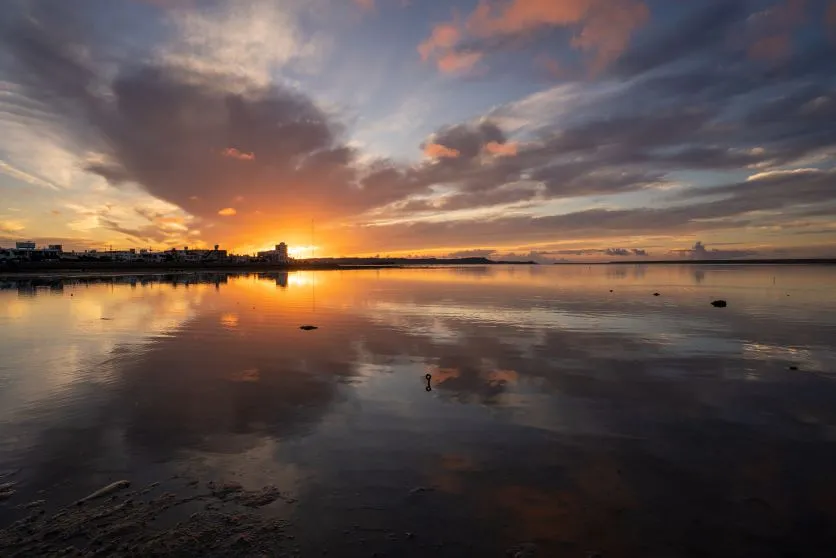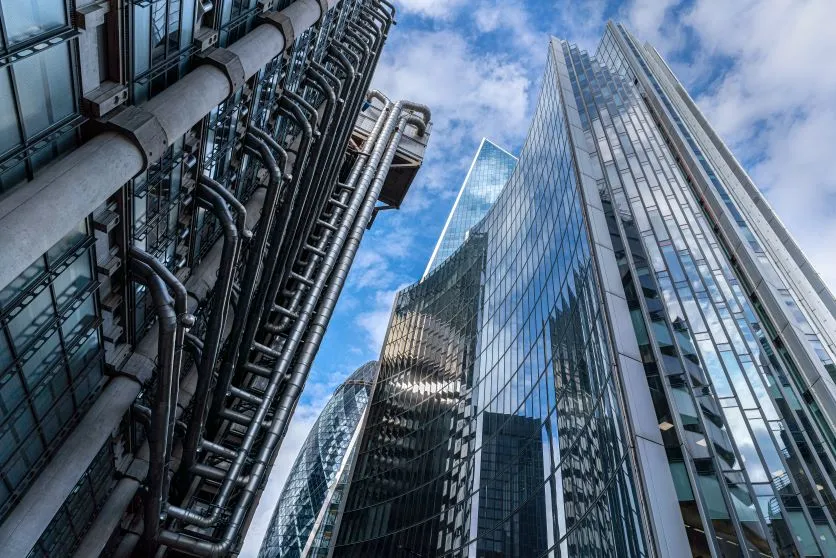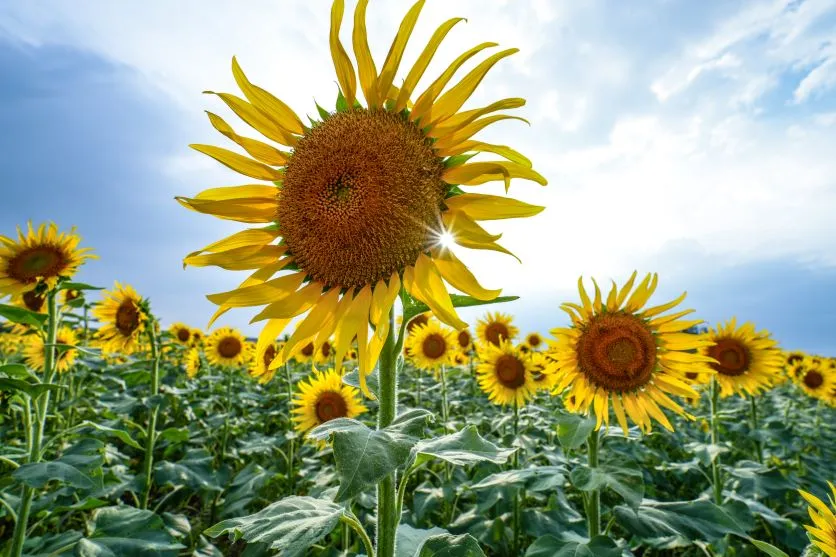November 29, 2024
Capture your travel memories in beautiful photographs! How to take travel photographs and recommended lenses
Capture your travel memories in beautiful photographs! How to take travel photographs and recommended lenses
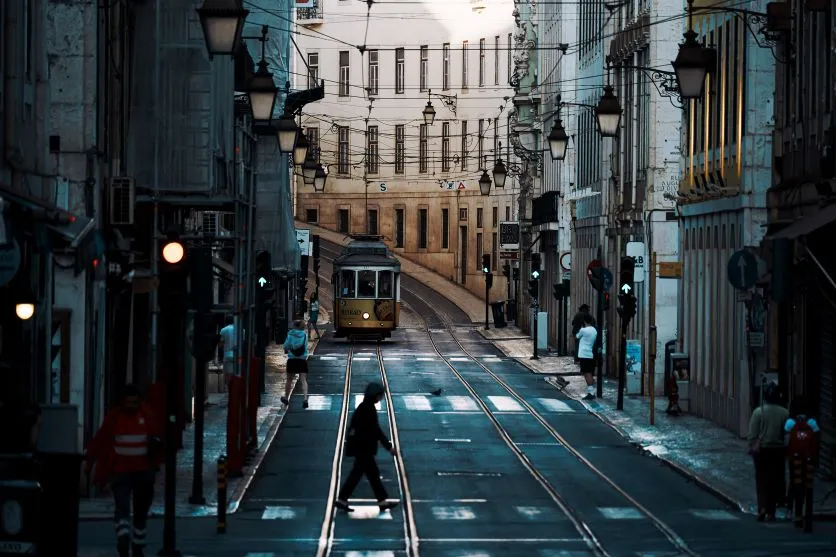

Beautiful scenery and memories from travel destinations should be beautifully preserved in photographs as irreplaceable memories. This article details tips and recommended lenses for taking more attractive travel photos with an interchangeable-lens cameras. Although some aspects may seem difficult to get used to, a few tips will help you take more impressive photos.
For serious photography, by all means, use an interchangeable-lens cameras!
When it comes to travel photography, most people will use a smartphone. However, for those who want to enjoy more serious photography, an interchangeable-lens camera is recommended.
The advantages of using an interchangeable-lens camera include beautiful bokeh and the ability to capture a wide range of angles of view with interchangeable lenses. The beautiful, natural, and smooth bokeh that only an interchangeable-lens camera can produce will make the subject of a portrait or a snapshot stand out and make the scene more attractive.
interchangeable-lens cameras with interchangeable lenses can handle a wide range of angles of view, from wide-angle to telephoto, and are characterized by their ability to capture high quality images. For example, a wide-angle lens can be used to capture the magnificent scenery spread out before you, while a telephoto lens can be used to fill the screen with distant subjects.
The telephoto lens can be used to fill the entire image with distant subjects. This is the true appeal of interchangeable-lens cameras.
Scenes to photograph and tips for taking pictures at your destination
Here are some typical shooting scenes and tips for taking pictures at your travel destination.
Snapshots
Snapshots that capture casual moments on street corners and streets are ideal for capturing vivid memories of your travels. First, observe your surroundings while carrying your camera. Then, when you come across a scene that you find interesting, feel free to release the shutter. It is also important to repeatedly take pictures of the same subject from different angles and heights. This will help you find a position that brings out the best in your subject.
Also, using a lens with a focal length of about 35mm to 85mm will make it easier to capture the subject at an angle of view close to the impression you see. If you want to emphasize the subject, set a smaller F-number to make the blur look larger and the subject look more enhanced.
If you want to capture the entire landscape, setting a slightly larger F-number will make it easier to see the details in focus.
Portraits
Try taking portraits against the backdrop of landscapes and buildings unique to your destination. By incorporating the local character into your photos, you can create a more memorable shot.
Balance with the background is also an important element in portraiture. For example, it is easier to adjust the placement of the person, background, and margins when shooting with an image of a rule of thirds composition, as described below. Also, setting the f-number close to the maximum aperture increases the bokeh effect and allows you to capture beautiful portraits that are typical of interchangeable-lens cameras.
If you want to focus on a person's expression or silhouette, use a standard lens or telephoto lens; if you want to include scenery, use a wide-angle lens.
Photographing other people without permission can cause trouble, not only in portrait photography. It is important to respect individual privacy, even in crowded places such as tourist attractions or event venues. If you wish to photograph someone, be sure to ask permission in advance and be respectful to others.
Natural scenery
When photographing vast natural landscapes, it is best to start with a wide-angle lens. It allows you to capture the entire landscape in great detail and leave the impression of the scene as you see it in your photographs. Wide-angle lenses also emphasize perspective, so they are good at dynamically expressing the depth and three-dimensionality of a landscape. Try changing angles and positions to find the point where the beauty stands out.
Setting the camera's F-stop at approximately f8 to f11 will produce sharp images of the landscape from the foreground to the background, with fine details.
In addition, being aware of changes in light depending on the time of day, such as morning sunrise and sunset, will give your photos a different look. In particular, the blue hour before sunrise and the magic hour after sunset are the perfect times to capture the fantastic colors and beautiful landscapes unique to your destination.
Table Photo
Photographs of food and tableware can be made warm and inviting by making good use of natural light. If possible, it is best to take pictures near a window or in a location with as much natural light as possible.
Also, holding the camera at an angle of 45 to 90 degrees to the natural light will help balance the sense of depth and shading, and shooting in semi-backlit to near-backlit conditions will make the food look even better. It is easier to achieve crispness by using a standard lens set at f/4 to f/5.6 and adjusting the settings so that the subject matter, the food, and the blurriness of the background naturally harmonize with each other.
A lens with a short minimum focus distance is ideal for table photography because it allows you to get closer to the subject in a small space. If you are planning to choose a lens, pay attention to the minimum focusing distance.
Indoor scenery
Since light levels are often insufficient when shooting indoors, adjusting exposure is important. If there is some natural light shining in, use that light.
If it is cloudy or there are no windows indoors, setting the f-stop close to wide open and increasing the ISO sensitivity will make it easier to take brighter pictures in darker locations. Also, adjust the brightness by adding exposure compensation as needed.
In rooms or corridors where space is limited, a wide-angle lens makes it easier to express spatial expansiveness.
Buildings and cityscapes
A wide-angle lens is useful when you want to capture the expanse and scale of urban buildings and cityscapes. Not only does a wide-angle lens allow you to capture the entire landscape in a wide angle of view, but it also emphasizes perspective, allowing you to dynamically express the height and size of the scene.
Another way to capture the liveliness of a townscape with depth, such as a shopping street or tree-lined avenue, is to use a telephoto lens. Telephoto lenses can create the illusion of compressed distance (compression effect), which allows you to create dense, layered landscapes. Also, by capturing a nearby building or structure and a distant natural scene (such as the ocean or a mountain range) in the same angle of view, you can take artistic photographs that effectively contrast man-made objects and nature. Of course, telephoto lenses are also ideal when you simply want to capture a large image of a distant building.
Depending on where you are traveling, you may also want to photograph night scenes. Without a tripod, you need to be careful as camera shake can easily occur, but by using a slower shutter speed and setting the f-number close to maximum aperture, you can easily take brighter pictures.
Basic Knowledge You Need to Know for Travel Photography
From here, we will introduce some basic knowledge that is useful to know when taking pictures on vacation, such as exposure settings and composition. Start with the basic settings and adjust them flexibly according to the environment and the subject at hand.
Tips on exposure settings
Exposure settings are an essential part of taking beautiful, clean photos. Know the basic mechanics of how it works, as underexposure will result in a dark and blurry picture.
Shooting Modes
interchangeable-lens cameras offer a variety of shooting modes. First, you should use aperture priority mode. In this mode, you set the f-number (aperture) and the camera automatically adjusts the shutter speed to ensure proper exposure. When traveling, you often take pictures of landscapes, buildings, and people, so it is a good idea to use aperture priority mode while adjusting the blur and brightness.
On the other hand, shutter priority mode is effective when shooting moving subjects. In this mode, the camera automatically adjusts the f-number to achieve the correct exposure according to the shutter speed. For example, fast-moving subjects such as animals or vehicles require a faster shutter speed setting to reduce subject blur. For this reason, the shutter priority mode is easy to use.
Once you have become accustomed to shooting, we recommend trying manual mode. This allows you to set the exposure freely, which expands the range of your shooting, and although the adjustment is a little more complicated, it allows you to get closer to your image in more detail.
F-number
The F-number is a numerical value that represents the aperture of a lens and directly affects the brightness and bokeh of a photo. A small F-number opens the aperture, allowing lighter to reach the sensor and making it easier to take brighter pictures. At the same time, the depth of field becomes shallower, resulting in greater bokeh.
Conversely, a large F-number closes the aperture, so care must be taken to avoid darker pictures. On the other hand, since the depth of field is deeper, the entire image is more easily in focus and sharp.
As a general setting, using F8 to F11 for landscapes will make it easier to capture details from the foreground to the background. For portraits and table photography, use an F-number close to maximum aperture, such as F2.8 to F6, for a photo where the background is appropriately blurred and the subject stands out.
Shutter speed
Shutter speed is a numerical value that represents the time it takes for the shutter of an interchangeable-lens camera to open. The faster the shutter speed, the easier it is to capture a moving subject in a still state, but the exposure is reduced and the picture becomes darker.
When shooting a stationary subject in a bright environment, a shutter speed of 1/60th to 1/250th of a second will produce a clear photo with little blurring. On the other hand, when shooting a moving subject, a faster shutter speed of 1/500 to 1/1000 second will produce sharp photos that capture the subject's movement well.
ISO sensitivity
ISO sensitivity is a measure of how well a camera's sensor amplifies the light it captures; the higher the ISO sensitivity, the more light is amplified and the brighter the picture appears. However, too high ISO sensitivity may result in noticeable noise, so be sure to use a moderate setting.
As a rule of thumb for ISO sensitivity, for outdoor photography during sunny days, ISO 100 to ISO 400 is often sufficient to take a bright enough picture. In contrast, when shooting in dark places, such as on cloudy days or indoors, it is common to set the camera to ISO 800 to ISO 3200. Adding exposure compensation can also result in a brighter photo. In practice, adjust the brightness while looking at the finished photo.
Composition that is useful to know
One of the most difficult points in photography can be said to be how to achieve overall balance. However, if you know basic composition, it will be easier to take crisp, stable photos. Here are three typical compositions.
Rule of Thirds Composition
The rule of thirds composition divides the image into three equal parts horizontally and vertically, and the subject is placed near the intersection of the three parts. By placing the subject off-center, it is possible to create movement and a flow of the viewer's gaze. It is also possible to add depth and a sense of three-dimensionality to the photo by overlapping the foreground and background. Since it is easy to balance the margins, this is a composition that can be easily tried with a variety of subjects in a travel destination.
Diagonal Composition
Diagonal composition is a composition in which the subject is placed along the diagonal lines of the picture plane, giving the picture depth and a dynamic impression. The eye is naturally guided along the diagonal, creating a sense of dynamism in the photo. This composition has a wide range of applications, including portraiture, table photography, and architectural photography.
Triangular Composition
Triangular composition is a composition in which the subject is placed within or along the sides of a triangle to achieve balance. For example, applying this composition to a landscape photograph of a mountain or waterfall will give the impression of stability and balance.
Direction of light
The impression of the landscape of a travel destination also changes depending on the direction of light, so it is important to know the differences in shading and contrast depending on the direction of light.
There are three main types of light directions: forward light, backlight, and side light.
In forward light, the light hits the subject from the front. This is ideal when you want to capture the subject clearly, as you can clearly see the subject's expression and colors. However, since shading is difficult to create, care must be taken to avoid flattening the picture.
Backlighting refers to the direction in which light hits the subject from behind. Since the subject is in shadow, facial expressions and details are difficult to see. On the other hand, backlighting can create dramatic atmospheres, such as diffusing light to create a warm atmosphere or bringing silhouettes to life in sunrises and sunsets.
Sidelight refers to the direction in which light hits the subject from the side. Shadows are easily emphasized, giving a three-dimensional effect to the subject. It is effective in portraits and still-life photography when you want to emphasize the texture and unevenness of the subject. However, since people and other subjects can easily appear cool, be sure to take pictures while making sure they match the subject's image.
Also, depending on the time of day when you are traveling, the colors and textures of the sunlight can give a very different impression. If there is a particular photo you want to take, consider the time of day when the photo will be taken when planning your trip.
How to Select the Right Lens for Travel Photography
The lens to take with you on your trip should be,
1. compact and not bulky
2. one lens should be able to handle a variety of scenes
3. high image quality
Here we introduce how to select a lens suitable for traveling.
Lightness and compactness
Lightness and compactness are very important factors for carrying an interchangeable-lens camera while traveling. A lightweight and compact lens will allow you to easily take it with you and will not be bulky as luggage. It is recommended that you actually hold the lens in your hand to check how it fits in your hand and how heavy it feels.
Focal length
Pay attention to the focal length of the lens you bring on your trip. A zoom lens of about 24mm to 70mm that covers the wide-angle to standard range can be used for a variety of scenes, from landscape photography to portraits. A high-power zoom lens that covers the wide-angle to telephoto range is also very versatile, as you only need one lens. This eliminates the need to frequently change lenses when traveling, allowing you to enjoy a smooth shooting experience.
Proximity shooting ability
Lenses with good close-up shooting ability are also very useful when traveling. Because they allow you to get much closer to the subject and capture details, they are also suitable for shooting in confined spaces such as small rooms and table photos. It is useful for situations where you want to get up close and personal, such as photographing food, small objects, and crafts at a café during a trip.
Maximum aperture
A lens with a small maximum aperture F-number makes it easier to take brighter pictures in dark places. A small maximum aperture F-number also makes it easier to take pictures with a large blurry background, making it suitable for taking pictures that take advantage of the blur effect. For example, it is recommended for portraits, snapshots, indoor shots where sunlight does not reach, and nighttime shots.
Autofocus (AF) performance
Check to see if the AF operates smoothly and focuses quickly and accurately. It is also reassuring if the focus tracks well even when the subject is moving. If there is a possibility of shooting in a quiet place, you may also want to consider the quietness of the AF.
Ambiguous Image Stabilization Mechanism
When traveling, it is difficult to carry a tripod, and hand-held shooting is common. Therefore, if the lens has an image stabilization mechanism, it will make it easier to stabilize the shot. It also makes it easier to take clear pictures with minimal camera shake, even in situations where slow shutter speeds are required.
Moisture-Resistant Construction
Weather changes are a fact of life when traveling. To continue taking photographs with peace of mind even in slightly rainy weather, lenses with splashproof construction are recommended. A lens with a Moisture-Resistant Construction prevents water from entering the lens and reduces the risk of malfunction.
Capture many memories of your trip with a lightweight, compact lens!
There are a variety of subjects at your destination, but with a few tricks, you can easily take beautiful pictures. Choosing the right lens is also essential to make your photography more enjoyable and fulfilling. A zoom lens that is lightweight, compact, and covers a wide range of focal lengths will make it easy to enjoy taking authentic photographs. Please refer to the points introduced in this article to capture the memories of your enjoyable trip!

Lens Featured in this Impression
-

-
17-50mm F/4 Di III VXD a068(Model )
It's the world’s first lens covering from ultra wide-angle 17mm to the standard 50mm focal length. The highly-compact TAMRON 17-50mm F/4 Di III VXD (Model A068) for Sony E-mount full-frame mirrorless cameras offers maximum versatility for still and video creators. From landscapes to living rooms, this lens captures all that you see.
-

-
20-40mm F/2.8 Di III VXD a062(Model )
The 20-40mm F/2.8 Di III VXD (Model A062) is a new large-aperture standard zoom lens that thoroughly pursues portability. While covering the range from the ultra-wide angle of 20mm to the standard range of 40mm, it is the smallest and lightest in its class. It also offers high image quality throughout the entire zoom range, making it useful not only for still image shooting but also for video recording such as vlogging. The VXD, which is quiet and agile, achieves high-speed, high-precision autofocusing. It is a new, unprecedented large-aperture standard zoom lens that allows users to easily enjoy taking out and shooting both still and video.
-

-
35-150mm F/2-2.8 Di III VXD a058(Model )
The 35-150mm F/2-2.8 Di III VXD (Model A058) is a high resolution travel zoom lens that covers everything from the 35mm wide angle to the 150mm telephoto focal length, the first zoom lens achieving an aperture of F2 at the wide angle end. It has a groundbreaking fast-aperture and utilizes the linear motor focus mechanism VXD (Voice-coil eXtreme-torque Drive), thereby achieving high speed, high precision autofocusing. The innovative lens design enabled us to greatly improve the lens's grip and functionality. The software, developed in-house, enables to easily customize functions and to update firmware.
-
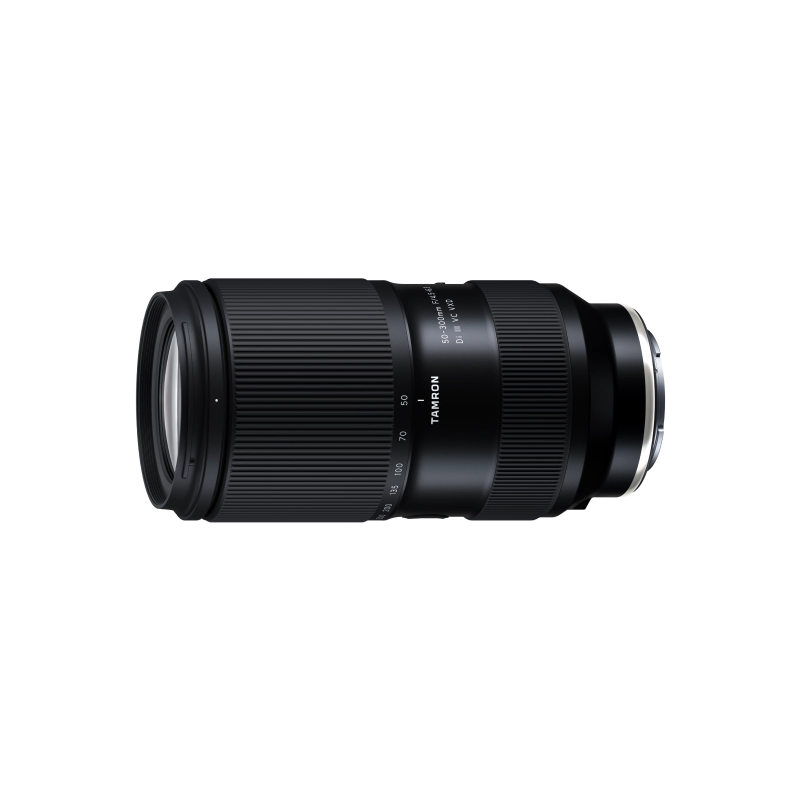
-
50-300mm F/4.5-6.3 Di III VC VXD a069(Model )
50-300mm F/4.5-6.3 Di III VC VXD (Model A069) is a 6x telephoto zoom lens for Sony E-mount that delivers outstanding convenience and image quality. Discover the groundbreaking capabilities of a 300mm telephoto zoom that starts from 50mm at the wide end.
-

-
28-300mm F/4-7.1 Di III VC VXD a074(Model )
28-300mm F/4-7.1 Di III VC VXD (Model A074) is a compact and versatile all-in-one 10.7x zoom lens for Sony E-mount. The lens boasts class-leading high image quality, and is equipped with high-speed AF VXD and VC. Go from wide-angle to long telephoto in an instant and capture every moment of the world around you.



